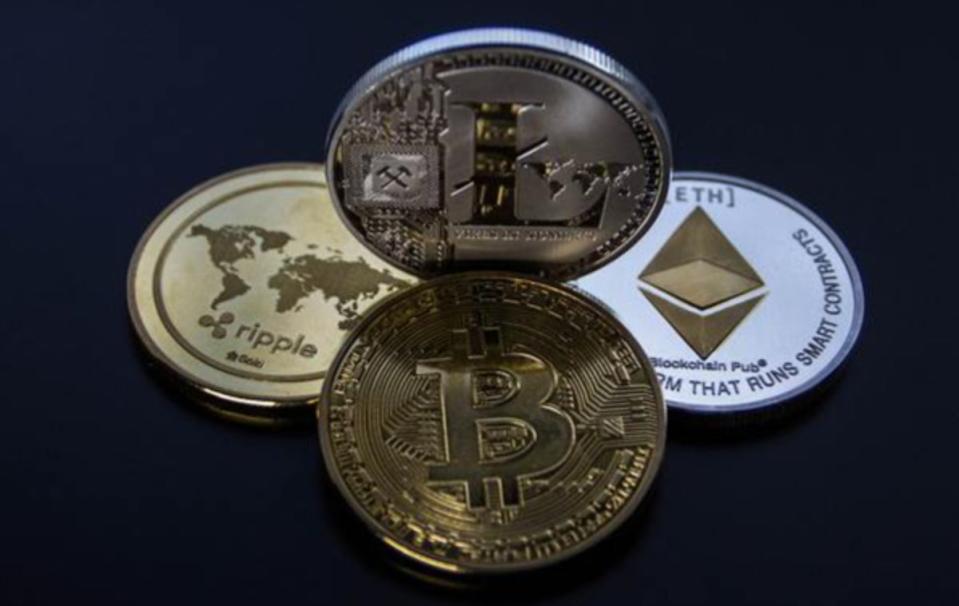Cryptocurrencies are a type of digital asset, which rely on cryptography for security.
The first cryptocurrency, Bitcoin, emerged in 2008 — the brainchild of an anonymous creator with the pseudonym Satoshi Nakamoto. In the years that followed, an estimated 5,000 competitor cryptocurrencies have been launched.
What began as a niche form of currency has become a popular option for a growing number of retail investors. But the UK’s financial regulator, the Financial Conduct Authority (FCA), warns that cryptocurrencies should be approached with extreme caution. Cryptocurrencies can fluctuate wildly in value, and you could lose some or all of the money you invest.
A digital asset
Cryptocurrencies such as Bitcoin are digital assets — they exist purely online and do not have a physical equivalent. The value of each digital ‘coin’ is determined by the market forces generated when they are bought and sold.
Like a physical asset, many cryptocurrencies cap the number of coins that can be minted. For instance, the number of Bitcoins that can be created is capped at 21 million.
Cryptocurrencies can be bought with traditional currencies such as dollars or sterling. Because each coin has the same value in every country, they can be useful for transferring money overseas, avoiding any exchange rate issues.
Increasingly, cryptocurrencies can also be used for day-to-day spending, with some retailers accepting Bitcoin alongside traditional currency.
How do cryptocurrencies work?
The majority of cryptocurrencies work without backing from authority, such as a central bank or government.
Instead, cryptocurrencies are underpinned by blockchain technology. Essentially, a blockchain is a digital public ledger, containing a record of every cryptocurrency transaction that takes place.
Because the blockchain is distributed across multiple computers, it’s incredibly difficult to tamper with or change. Every time new transactions are added to the ledger, they must be verified by multiple computers in the network.
In this decentralised system, a ‘proof-of-work’ mechanism is often used to validate transactions. Before new transactions can be added to the blockchain, computers in the network must race to solve a mathematical puzzle. The computer that solves the puzzle first gets to add the new block once its solution is verified by other users.
Solving these puzzles requires considerable computing power, but if a machine in the network manages the task it’s rewarded with a coin. This is how new coins are created, in a process known as ‘mining’.
The main issue with proof-of-work systems is the enormous amount of energy they consume. According to estimates from Columbia Climate School – part of Columbia University – Bitcoin alone consumes 150 terawatt hours of electricity each year. That’s more than the entire population of Argentina.
Because of this intense energy usage, a number of altcoins — including Bitcoin’s main rival, Ethereum — have switched from proof-of-work to an alternative system.
Rather than having every machine in the network competing to validate new transactions, ‘proof-of-stake’ systems randomly select just a handful of computers to complete the task.
Once the transactions have been added to the blockchain, the machines that validated them are rewarded with cryptocurrency.
The system is called proof-of-stake because network users must ‘stake’ their own coins to be considered as validators. When the process of validating new transactions is complete, these coins are returned.
Are cryptocurrencies a good investment?
Cryptocurrencies often fluctuate in value, experiencing a rollercoaster of peaks and troughs.
Back in 2013, one Bitcoin was worth just a few dollars. Byt the currency soared in value to over $60,000 in 2021, before dropping to $30,000 a couple of months later.
Other cryptocurrencies undergo similarly dramatic swings in price, and the FCA advises investors to approach these assets with extreme caution.
Certain cryptocurrencies — known as ‘stablecoins’ — try to avoid these extreme highs and lows by pegging their value to another asset, such as the US dollar. When functioning correctly, a stablecoin pegged to the US dollar should always be valued at $1.
However, even stablecoins can rise and fall in value if something goes wrong.
How to buy cryptocurrency
You can start investing in cryptocurrencies using the following steps — but always be aware that your capital is at risk, and you might lose some or all of your money.
-
Select a broker or crypto exchange
To buy cryptocurrencies, you must sign up to a broker or crypto exchange.
These are online platforms where buyers and sellers can exchange cryptocurrencies. The features on offer and how user-friendly the buying process is depends on the platform — as do fees.
For this reason, it’s worth weighing up a few options before making your decision.
When selecting an exchange or broker, check whether the platform allows you to move your crypto holdings elsewhere.
-
Choose a payment option
Once you have opened an account with an exchange, you’ll need to fund it before you can start buying cryptocurrencies.
This usually means making a bank transfer from a current account or savings account. Some exchanges may also allow you to pay via credit card or through PayPal.
-
Place your order
When your account is funded, you can place an order for the cryptocurrencies you want to buy. To do this, you can navigate to the cryptocurrency you are interested in purchasing, and enter the amount of money you want to invest.
When the transaction is complete — and any exchange fees taken — your coins will be transferred to your wallet on the exchange.
It’s possible to buy a fraction of a crypto token, since some popular coins are worth tens of thousands of dollars.
-
Choose your storage method
Many crypto exchanges offer built-in crypto wallets — a virtual ‘wallet’ where your cryptocurrency tokens are stored.
These wallets are typically connected to the internet, which means coins may be more easily stolen by hackers.
Most major crypto exchanges have private insurance so they can reimburse users if this happens, but you may prefer to move your assets for an extra layer of security.
The safest place to store crypto is a ‘cold’ wallet — one that isn’t connected to the internet. These wallets sometimes take the form of a physical hard drive. While this option is highly secure, if you lose your access code you could be locked out of your cryptocurrency forever.
Cryptoassets are highly volatile and unregulated in the UK. There is no consumer protection and tax on profits may apply.


No Comments Yet